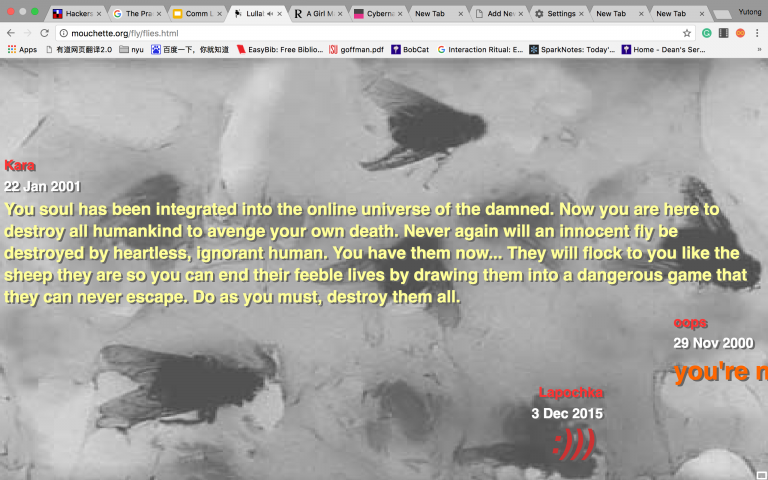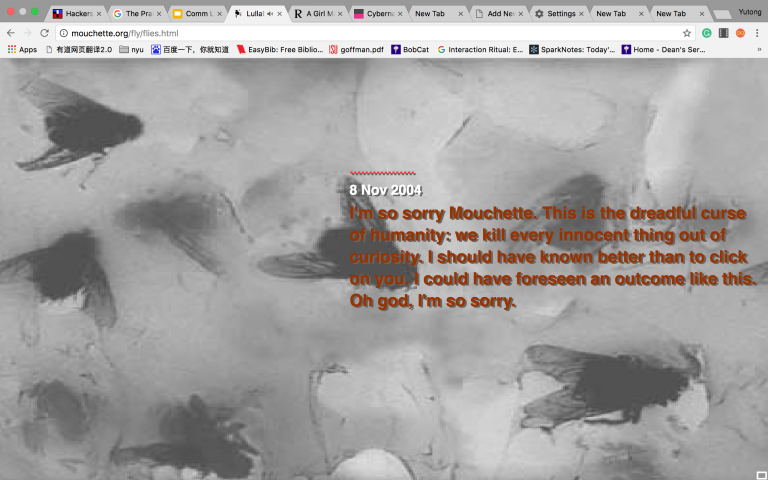- Response to “A History of Internet Art”
- By Amber (Yutong) Lin
By looking into the history of Internet Art, I can see the content and format of Internet Art is closely linked to political and social circumstances. Initially, Internet Art begins in a transition age, information and technology evolve too fast, all of a sudden, the world are connected together and opened up. Liberation and freedom are the gifts from Internet.
Internet brings about connections between users from all over the world. With the development of internet technology. It spreads the idea of democracy and transparency of information. It is a true step of “civilization.” It is a huge progress of the movement of freedom of speech. From art composition perspective, internet is a new platform for opportunities to create more interactive and engaging programs that include more and more average people and audience to be part of the arts by contributing actions (“click” “hover” “scroll” “type”…) and emotions (happy, sad, angry, sympathetic…) to communicate with the web page, in fact, the audience are communicating with each other online in reflection of themselves.
I think the internet art involves more individuality and personality based on its nature of free-speeches and anonymity. Information and languages are translated into data lived forever on the internet, it never dies, but have it ever lived from the beginning?
I looked up the example during class, the Mouchette program, (http://mouchette.org/index.html) and the Darko Maver (http://0100101110101101.org/darko-maver/). Both of them are fictional characters created by artists. It brings me back to the question about the question of authenticity and fakeness. In Mouchette program, where people can be “Mouchette” by providing personal information to the website. Here the boundaries of “real” and “fake” are much more obscure. I don’t think they still possess the distinction once they are living on the screen. How do people feel about a fictional or “fake” artist’s (Darko’s) death? Why so many people worldwide developed such a strong attachment to the girl who fantasizes suicide?
It is still a live program that people can response to a girl named “Mouchette,” it is a page of a fly flying all over the page, once you catch it, it will die because of you ‘clicked” it. She then asks you serious questions:





